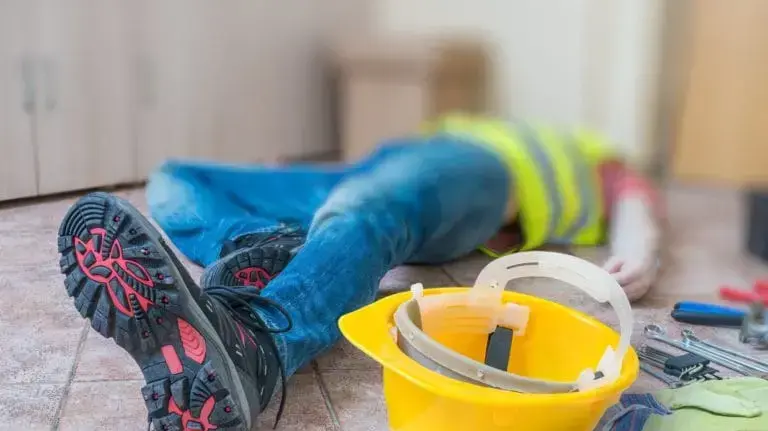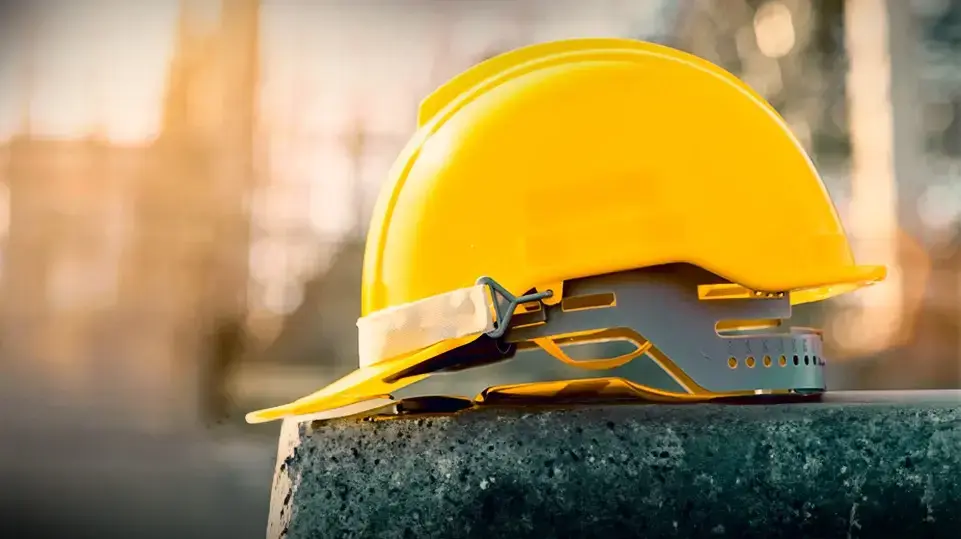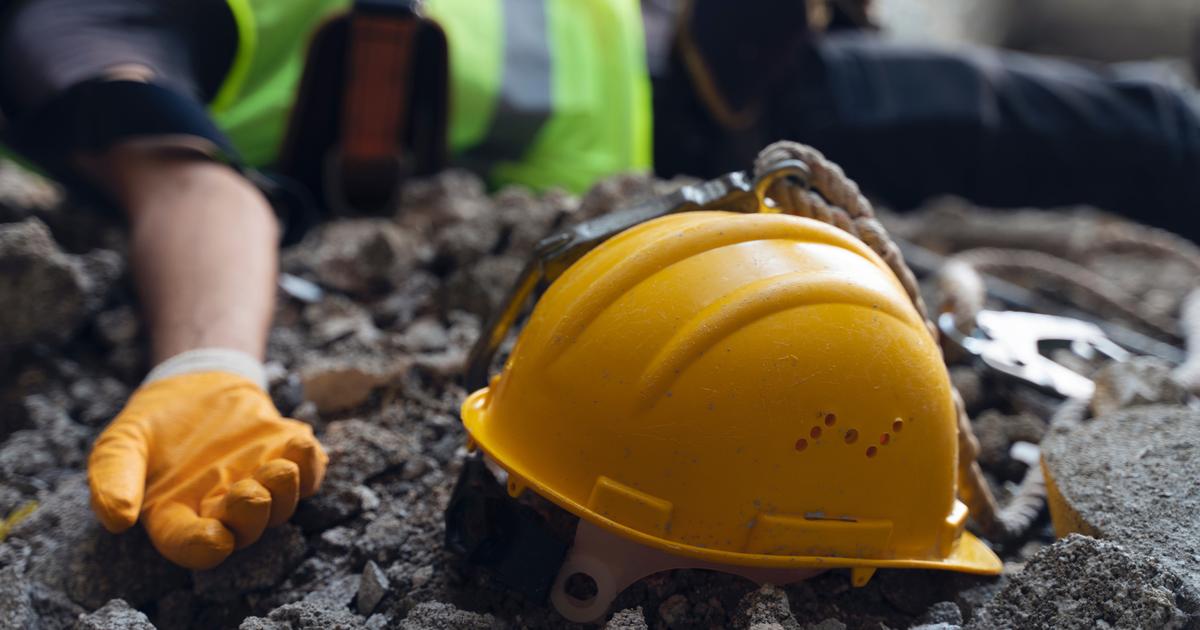How to prevent work accidents at construction sites?
Almost daily, reports of work accidents are published at construction sites where workers are seriously injured and even killed.
Serious accidents can be prevented by maintaining safety at construction sites.
How is it done and who is responsible for it?
In the next article
S.A.
Engineering - Shadi Arshid, in collaboration with Zap Legal
03/05/2022
Tuesday, 03 May 2022, 07:50
Share on Facebook
Share on WhatsApp
Share on Twitter
Share on Email
Share on general
Comments
Comments
Work accidents at construction sites because of which workers who went out to work to support the family lose their lives or are seriously injured have become a coup d'etat, which no one seems to be able to stop.
But these accidents can be prevented if one adheres to work according to regulations and does not give up on hiring skilled professionals, as required by law.
A construction site is actually a type of small and temporary factory where a lot of workers are employed in different fields.
The works at the construction site are considered hazardous works, with exposure to weather damage such as extreme heat or rain and winds, while in the factory, the work is usually done indoors.
In addition, the worker at a construction site performs variable jobs while in the factory the nature of the work is constant and each worker is active in a workstation he is familiar with.
In order to maintain safety at a construction site, one must first recognize the essential differences between work in a factory and work at a construction site and ensure proper supervision and safety mechanisms for construction sites.
Construction sites employ many people, each with different and sometimes different responsibilities (Photo: ShutterStock)
Who is responsible for safety?
Construction sites employ many people, each with different and sometimes different responsibilities.
For example, a "occupier" is the owner of the area or the controlling owner of any area and the "client of the work" is the owner of the property or the person whose property owner has the power to contract with contractors to perform construction or engineering construction work.
A "main contractor" is a person who enters into a contractual agreement with a client to carry out construction or engineering construction work, while a "subcontractor" is a person who enters into a contractual agreement with a main contractor to carry out construction work.
The "machine owner", for example, the owner of a bulldozer that is rented and operates on a construction site, also has a responsibility for the safety of the machine.
Therefore, there must be one factor that "wins over the orchestra" as a whole, and that factor is the foreman - the worker who performs the construction appointed to manage and supervise all the construction work on the site.
What is the foreman responsible for?
A foreman is responsible for ensuring that the construction site is operated in accordance with the various occupational safety regulations, and must take appropriate steps to ensure that each worker complies with regulations relating to his work, unless the duty has been expressly imposed on the work performer.
Even if the construction operator does not appoint a foreman, it does not absolve him of responsibility.
If for any reason there is no foreman at a construction site, the responsibility lies entirely with the construction operator.
According to the regulations, only one foreman will be appointed at the construction site.
If there are multiple contractors on the construction site, the foreman must be appointed by the main contractor.
Appointing one foreman prevents a situation of escaping responsibility in matters of safety and lack of clarity.
In order for the foreman to be able to answer any question and safety problem that arises at a construction site, he must have an education defined in construction work safety regulations:
1. Has at least five years of experience in construction work from the age of 18
2. A technician with at least three years 'experience in construction work after reaching the age of 18.
3. An engineer or practical engineer with at least two years' experience in construction work, who successfully passed a construction work safety test before a committee appointed by the Chief Labor Inspector according to a plan approved, and worked in construction work for seven years At least after reaching the age of 18.
The foreman is not the only one responsible for the construction site.
In the event that the site employs 50 or more employees, the person in charge must also employ a person in charge of safety.
What is the role of the safety officer?
The safety officer is a critical professional in the field of construction sites.
This profession is enshrined in law and appears in the regulations of the Organization of Labor Supervision (Safety Supervisors) 5756 1996. A safety supervisor must be involved in the project from beginning to end and be well acquainted with the laws and regulations along with field management
. In addition, the safety officer must know how to manage risks dynamically and frequently, depending on the nature of the work at the construction sites. If necessary, he can order a work
stoppage
if there is an immediate danger to human life.
The Labor Inspection Service of the Ministry of Industry, Trade and Employment operates under the Law "Organization of Labor Inspection, 1954". The
Supervision Service operates through labor inspectors, who have extensive powers. An inspector can enter any place where a person works, check the work arrangements, safety arrangements, glosses and welfare, including facilities, equipment and work processes (also through the use of a specialist)
. Accident, is responsible for investigating the causes and circumstances of accidents (police intervention only in cases of fatal accidents or road accidents) and can interrogate any worker at the construction site, check documents and be accompanied by a police officer. For complete shutdown of the site.
The Institute for Safety and Hygiene is also involved in maintaining safety at construction sites under the Labor Inspection Organization Law, which defined it as a body "whose purpose is to promote the conditions of safety at work and professional hygiene."
His main activity is in the field of information, guidance and research.
The more skilled and professional workers at construction sites understand the importance of maintaining safety regulations for protecting their lives as well as their professional rights, the more likely the number of fatal accidents at construction sites will decrease significantly.
When all the bodies I mentioned function professionally and correctly and work collaboratively, fatal and unnecessary accidents can be prevented.
Shadi Arshid is a civil construction engineer, a graduate of the Technion, with 22 years of experience, a safety officer and a lecturer in the field of safety at Alpha College, Nazareth.
For contact and additional details, you can contact us by phone - 077-2314307
on
the company
's website.
The information presented in the article does not constitute legal advice or a substitute for it and does not constitute a recommendation for taking proceedings or avoiding proceedings.
Anyone who relies on the information in the article does so at his own risk
Sentence
Torts and accidents
Tags
work accident









